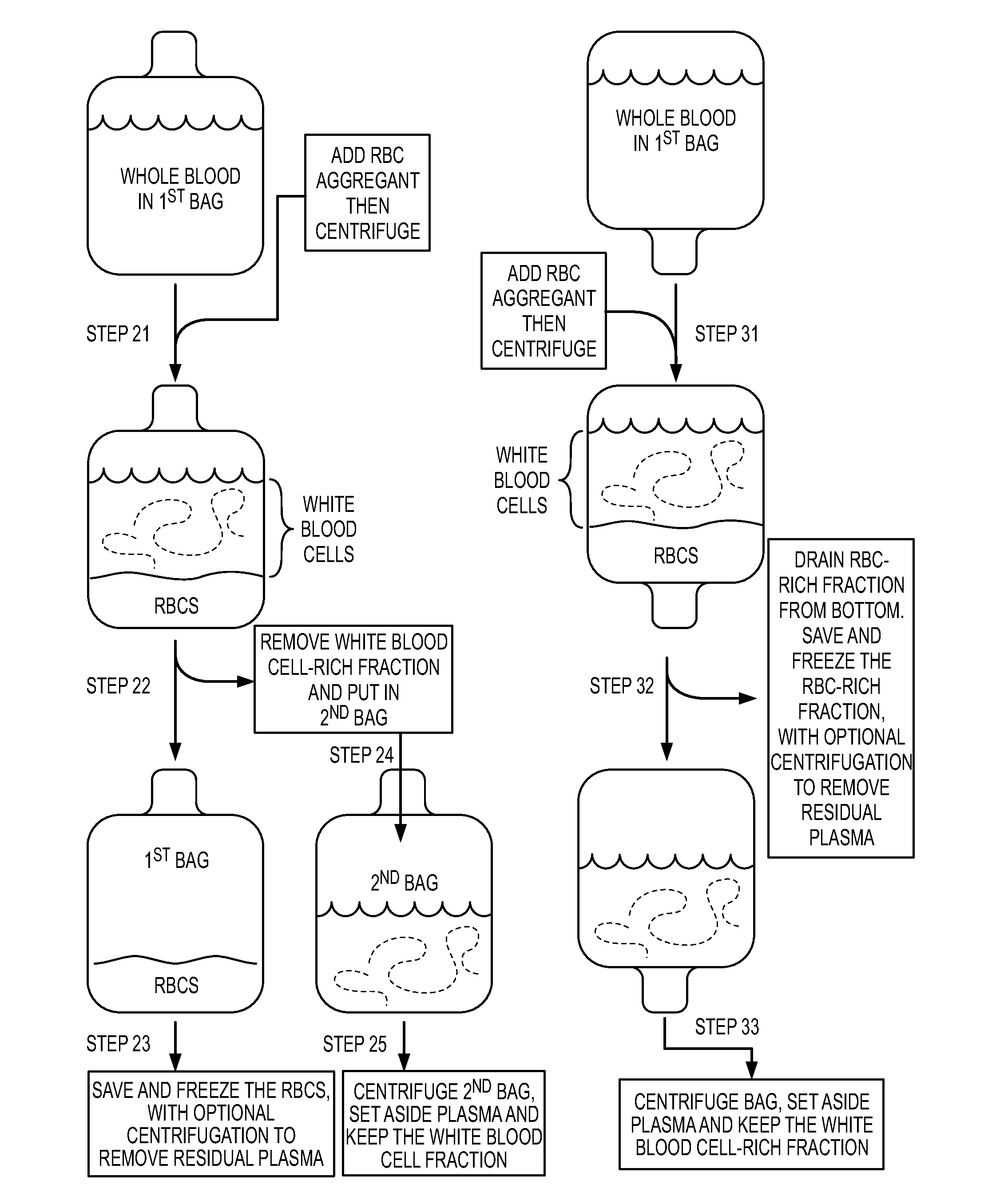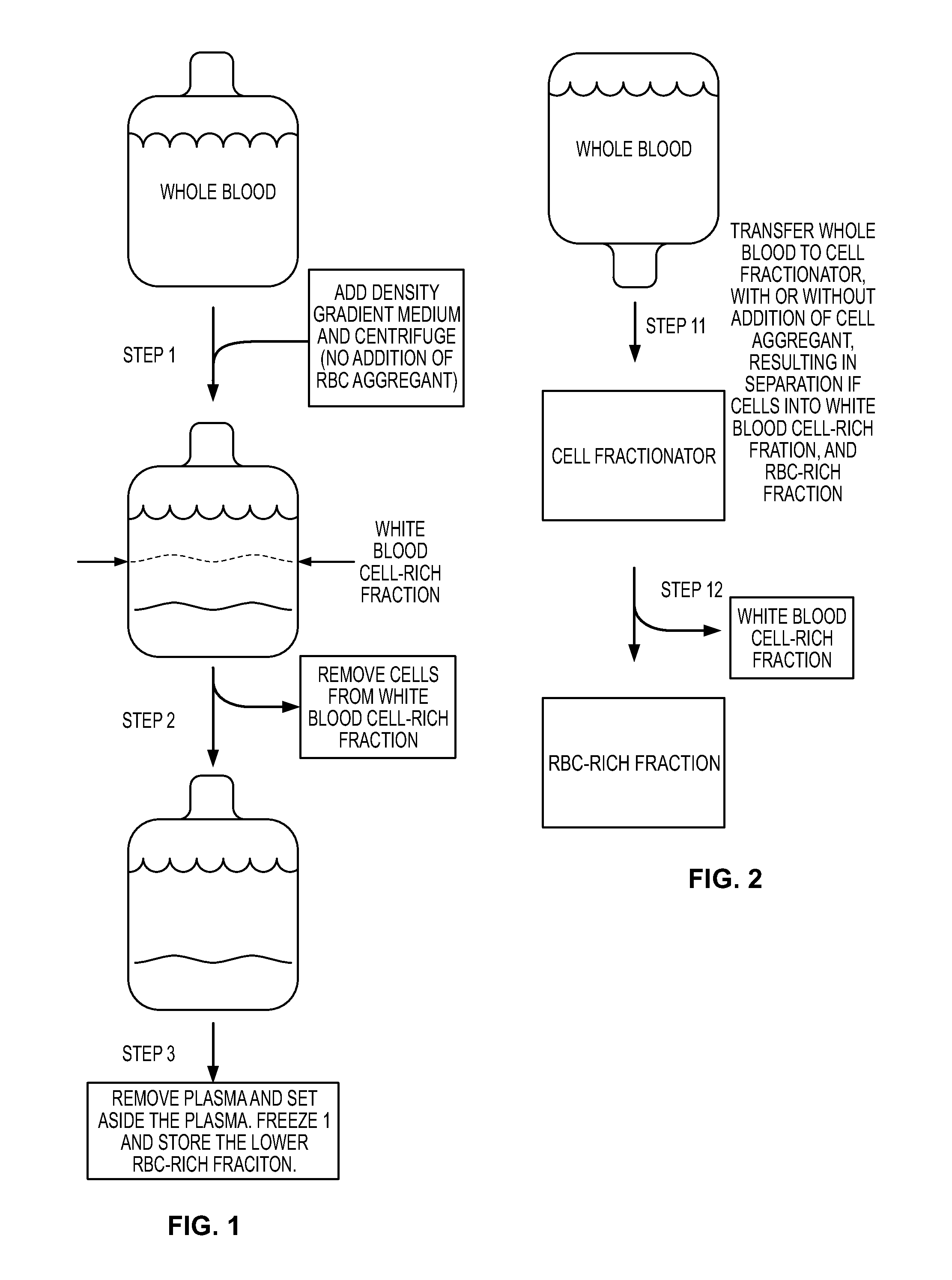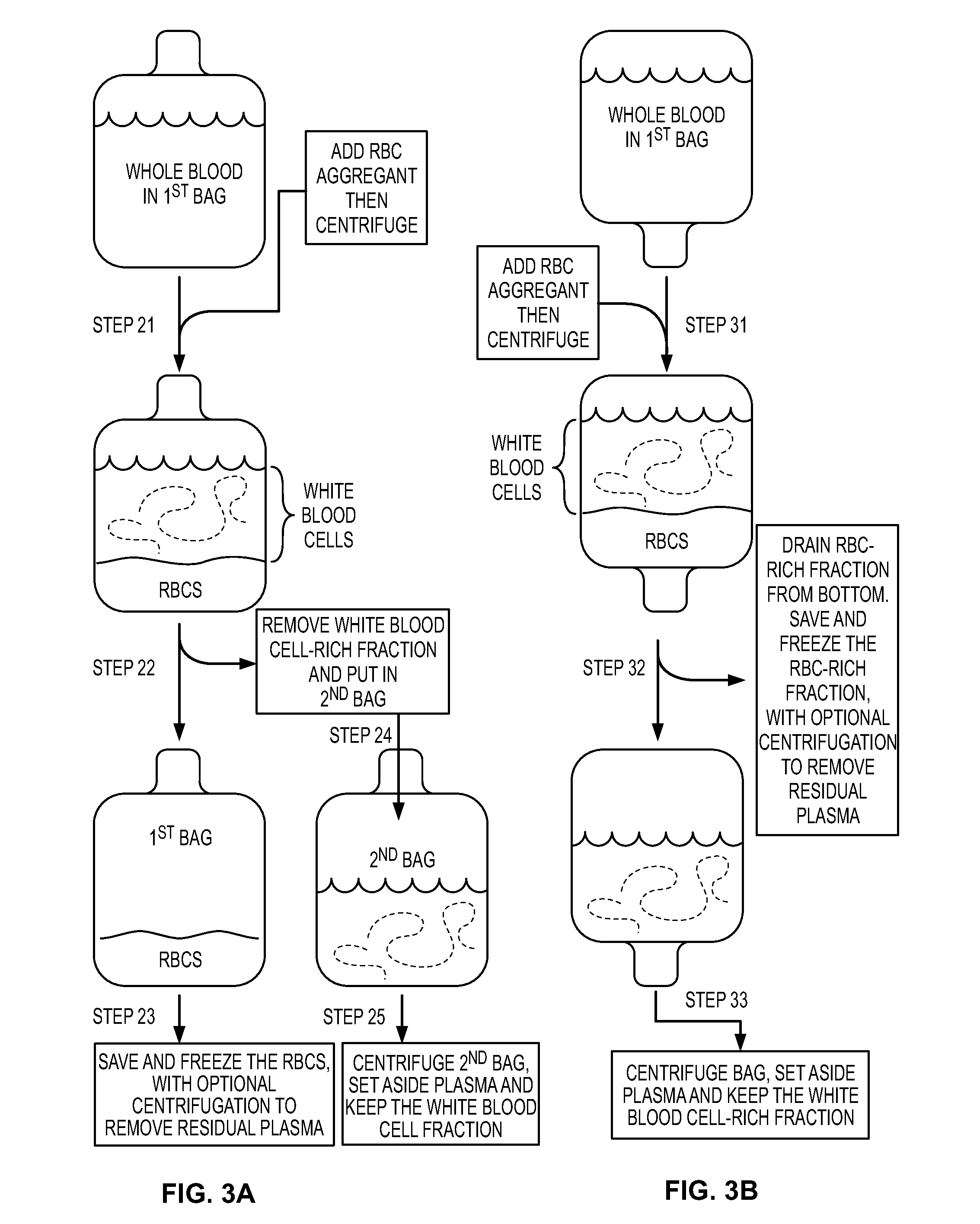Blood cell preparations and related methods (gen 8)
a blood cell and preparation technology, applied in the field of placental neonatal blood, to achieve the effect of reducing space and volume, reducing dmso, and reducing adverse events
- Summary
- Abstract
- Description
- Claims
- Application Information
AI Technical Summary
Benefits of technology
Problems solved by technology
Method used
Image
Examples
first example
[0103]Red Blood Cell (RBC) reduction can involve the following steps (Rubinstein et al (1995) Proc. Natl. Acad. Sci. 92:10119-10122; Dazey et al (2005) Stem Cells and Development. 14:6-10; Lapierre et al (2007) Cytotherapy. 9:165-169).
[0104](1) Collect placental neonatal blood in a collection bag.
[0105](2) Add hydroxyethyl starch (HES) to a final concentration 1.2%. The HES enhances the sedimentation of the red blood cells.
[0106](3) Centrifuge in original collection bag. Centrifuge at 50 g for five minutes at ten degrees C., in order to acquire a leukocyte-rich supernatant.
[0107](4) After acquiring the leukocyte-rich supernatant, transfer the leucocyte-rich supernatant into a “plasma transfer bag.”
[0108](5) Once the leukocyte-rich supernatant is in the “plasma transfer bag,” centrifuge the “plasma transfer bag” at 400 g for ten minutes in order to sediment and collect the leukocytes. The result is a plasma supernatant and a white blood cell-rich fraction.
[0109](6) Transfer the super...
second example
[0111]Red Blood Cell (RBC) reduction can involve the following steps (Alonso et al (2001) Cryoprotection. 3:429-433).
[0112](1) Collect placental neonatal blood in a collection bag, where collection bag includes anti-coagulant.
[0113](2) Add one volume of hetastarch to 5 volumes of the placental neonatal blood / anti-coagulant mixture.
[0114](3) Bring mixture to 4 degrees C. by placing in a refrigerated centrifuge (without centrifugation) for 45 minutes. Then, centrifuge 5 minutes at 50 g, in order to sediment the red blood cells, and then drain out the red blood cells. This removes about 80% of the red blood cells.
[0115](4) To the supernatant that was above the red blood cells, centrifuge for 13 minutes at 420 g.
[0116](5) Extract the plasma from the top, using a “plasma expressor.” What remains is a product that is depleted in plasma and depleted in red blood cells.
[0117](6) To the product, add enough cold DMSO to give a final concentration of 5-10% DMSO.
Red Blood Cell (RBC) Depletion / R...
third example
[0118]Red Blood Cell (RBC) reduction can involve the following steps (Regidor et al (1999) Exp. Hematol. 27:380-385).
[0119](1) Dilute collected placental neonatal blood to 25% hematocrit with Hanks' basic salt solution.
[0120](2) Add 6% (wt. / vol.) of HES (molecular weight 450,000) in 0.9% NaCl. The HES is added to 1:7 (vol. / vol.) to the blood, for a final HES concentration of 0.75%.
[0121](3) Allow gravity sedimentation of RBC at 22 degrees C. in the first bag, where sedimentation is permitted until a clear demarcation is seen between RBCs and leucocyte-rich plasma.
[0122](4) After the clear demarcation is visible, drain RBCs into a second bag.
[0123](5) Regarding the bag containing the leukocyte-rich plasma, centrifuge this bag at 800 g for ten minutes at 22 degrees C.
[0124](6) After centrifugation, remove the supernatant plasma with a “plasma extractor” to a third bag.
Red blood Cell Depletion / Reduction
PUM
 Login to View More
Login to View More Abstract
Description
Claims
Application Information
 Login to View More
Login to View More - R&D
- Intellectual Property
- Life Sciences
- Materials
- Tech Scout
- Unparalleled Data Quality
- Higher Quality Content
- 60% Fewer Hallucinations
Browse by: Latest US Patents, China's latest patents, Technical Efficacy Thesaurus, Application Domain, Technology Topic, Popular Technical Reports.
© 2025 PatSnap. All rights reserved.Legal|Privacy policy|Modern Slavery Act Transparency Statement|Sitemap|About US| Contact US: help@patsnap.com



